My name is Cori Emmolo, and I am a third year architecture student with a focus on structural feasability and usage of curves as a design language. I have been studying for a total of 5 years in the architectural field, with extra knowledge stemming from the Advanced Diploma of Building Design. I am interested in both residential and commercial oppurtunities.
Cori Emmolo
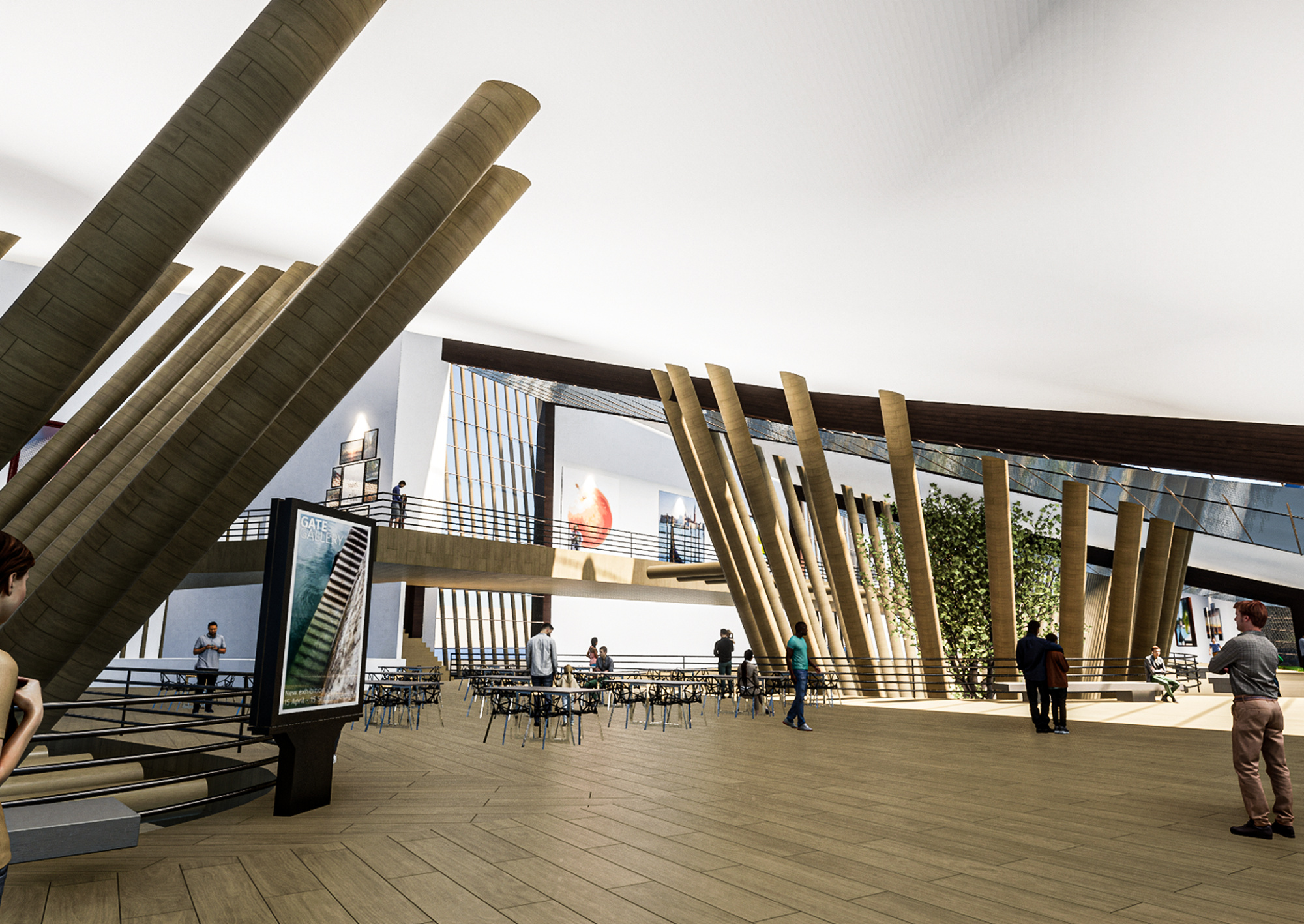
The NAH
The middle of the design focusing on both column areas and the central area which joins the split levels.
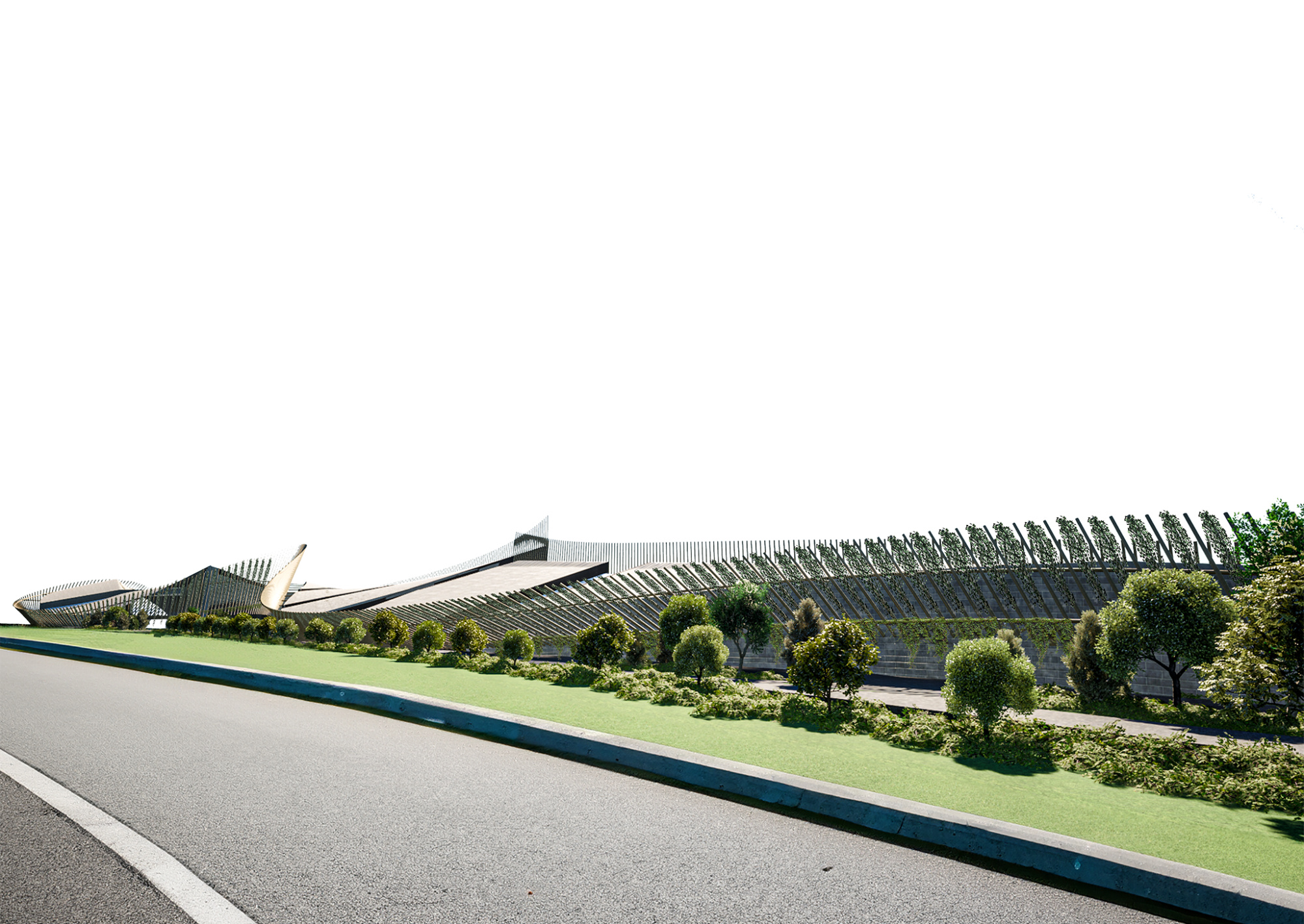
Exterior view
An exterior view of the NAH, showcasing the guerilla gardening on the facade as well as the pathways leading to the entrance.
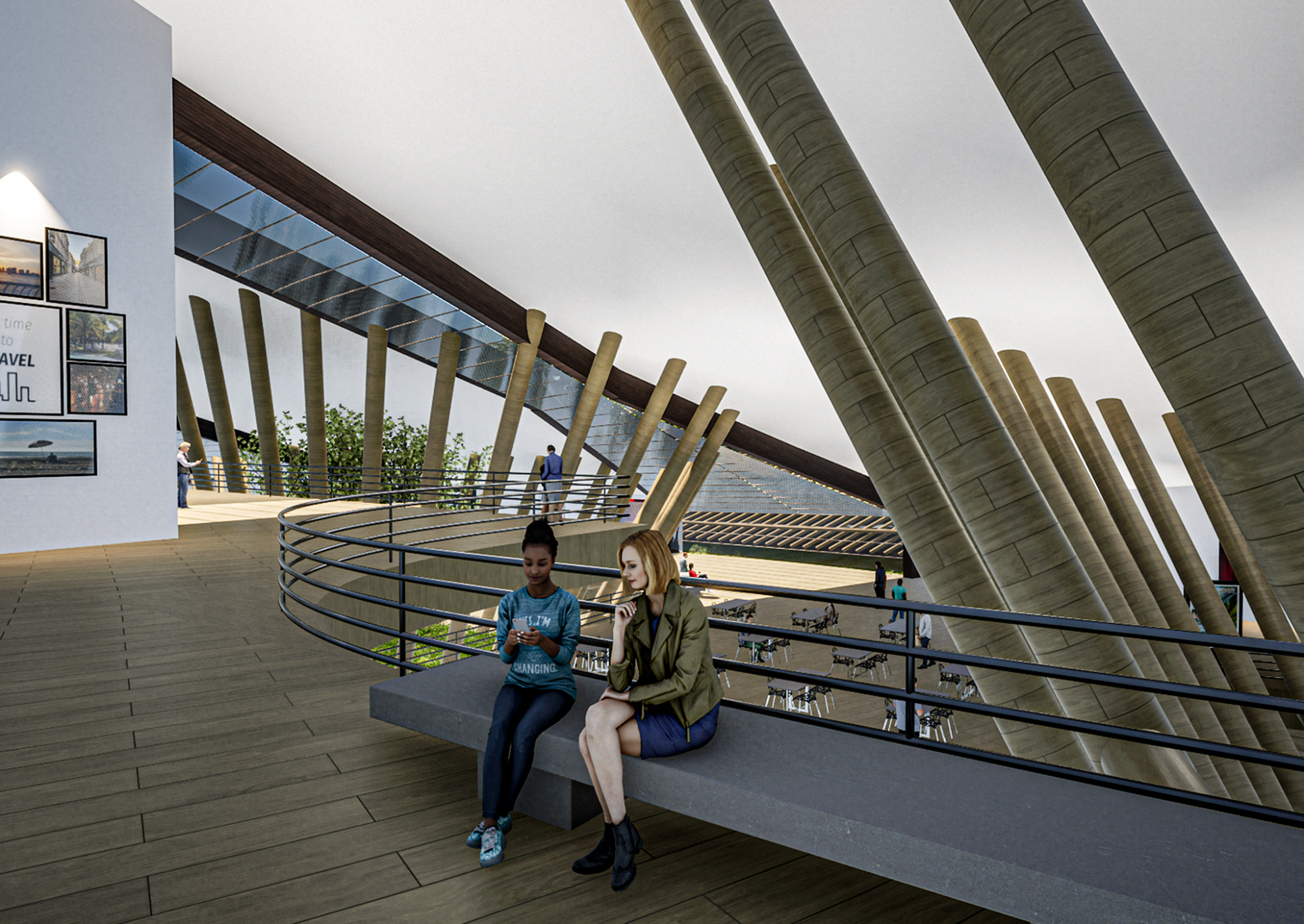
Split levels
A view from the split level taken near the middle of the design looking down.
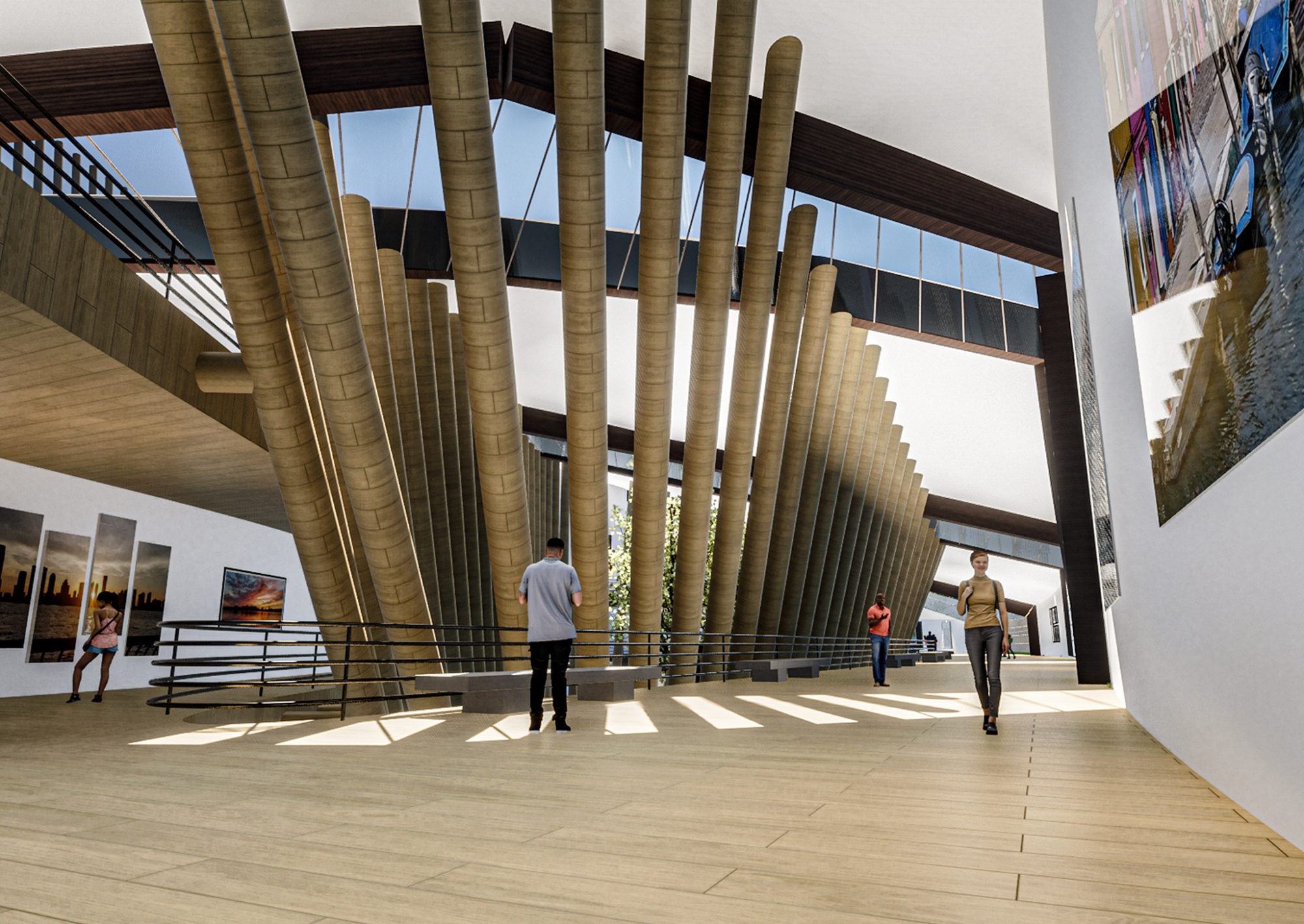
First view
The first view visitors will see when they enter the NAH. A grandiose set of columns that do not block the view.
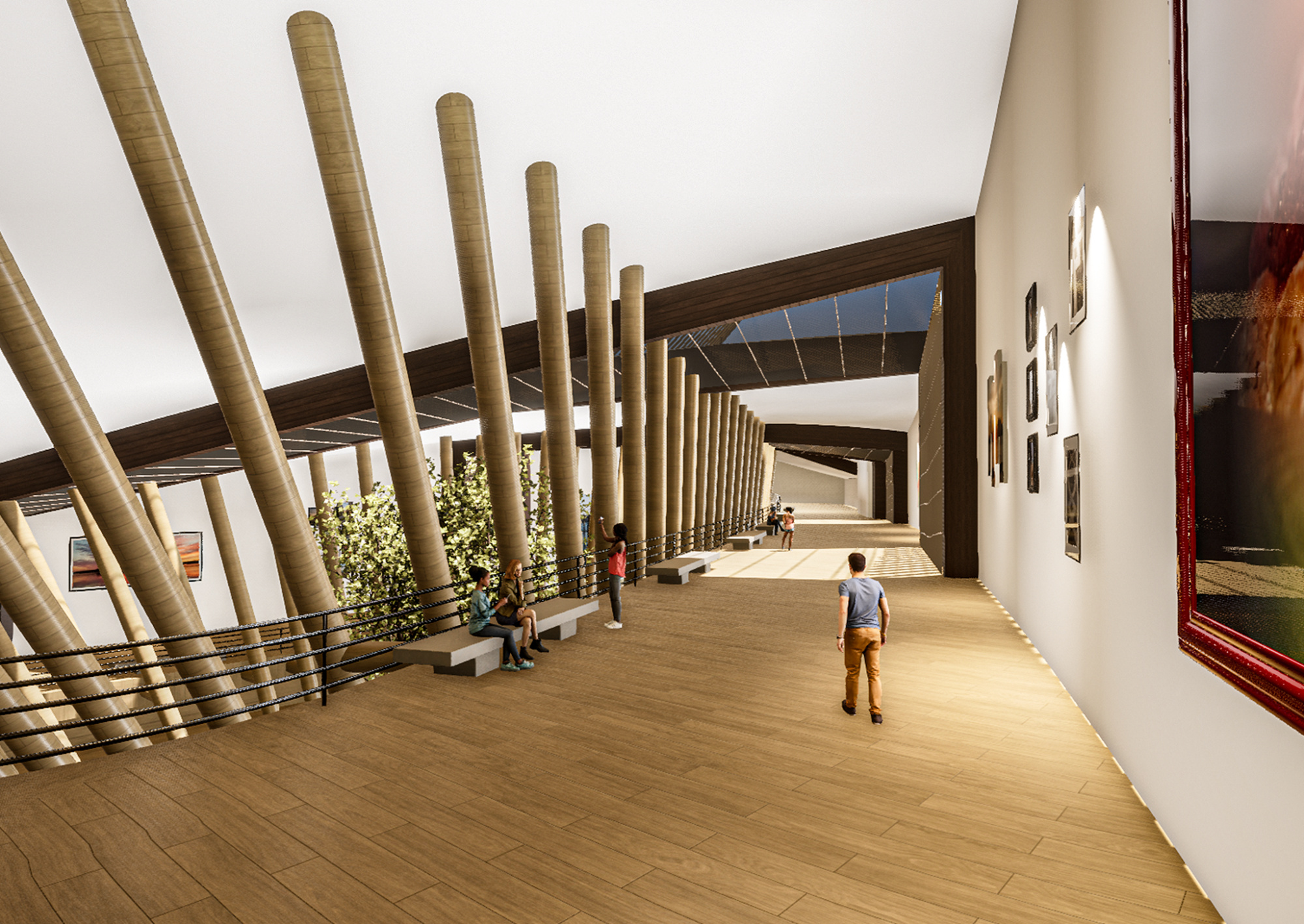
Community Exhibition
The community exhibition lies on the top floor, whilst the historical exhibition lies on the ground floor. This creates a journey between the past and the present through verticality, exemplified by the columns that can be seen from any point in the building.